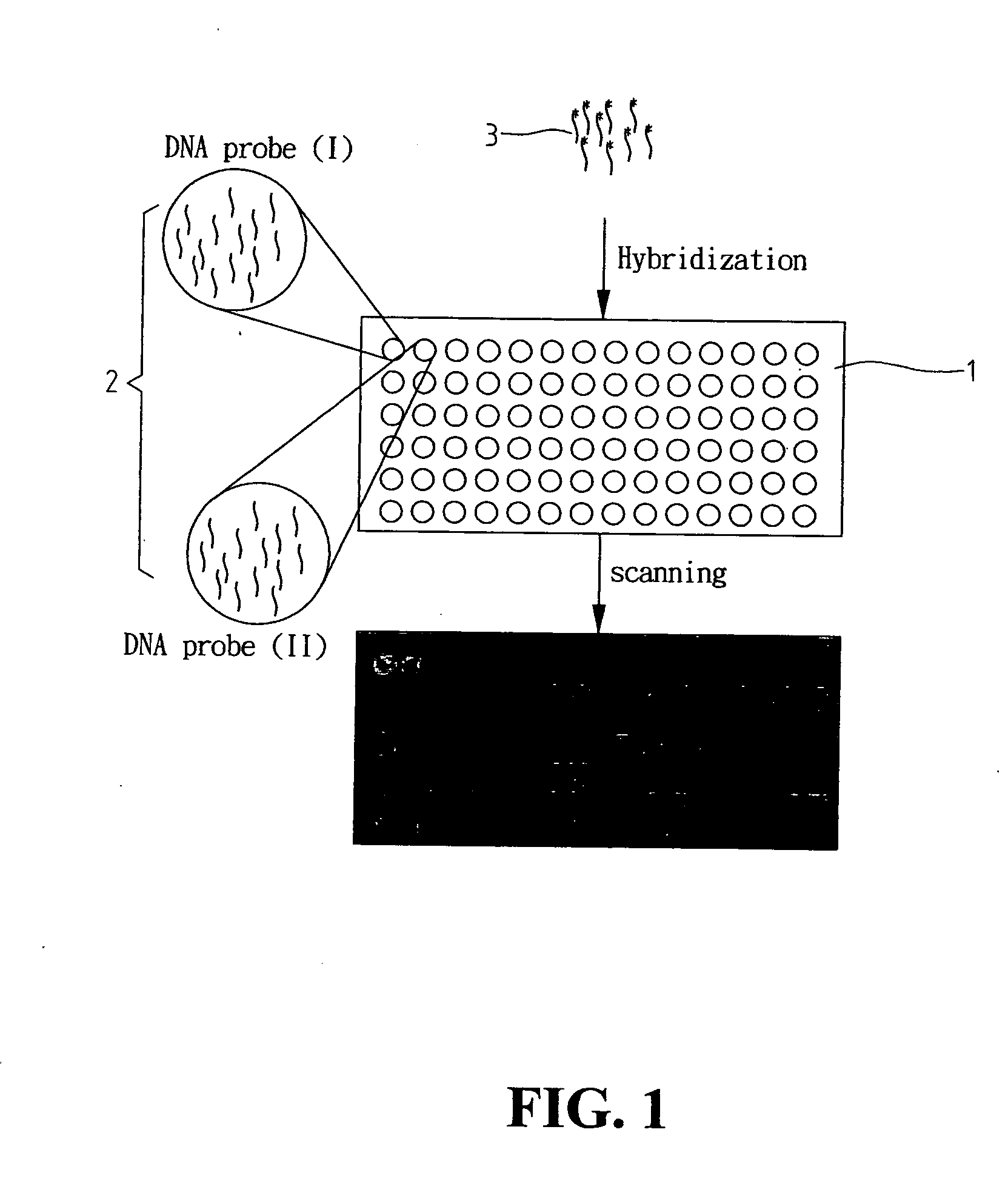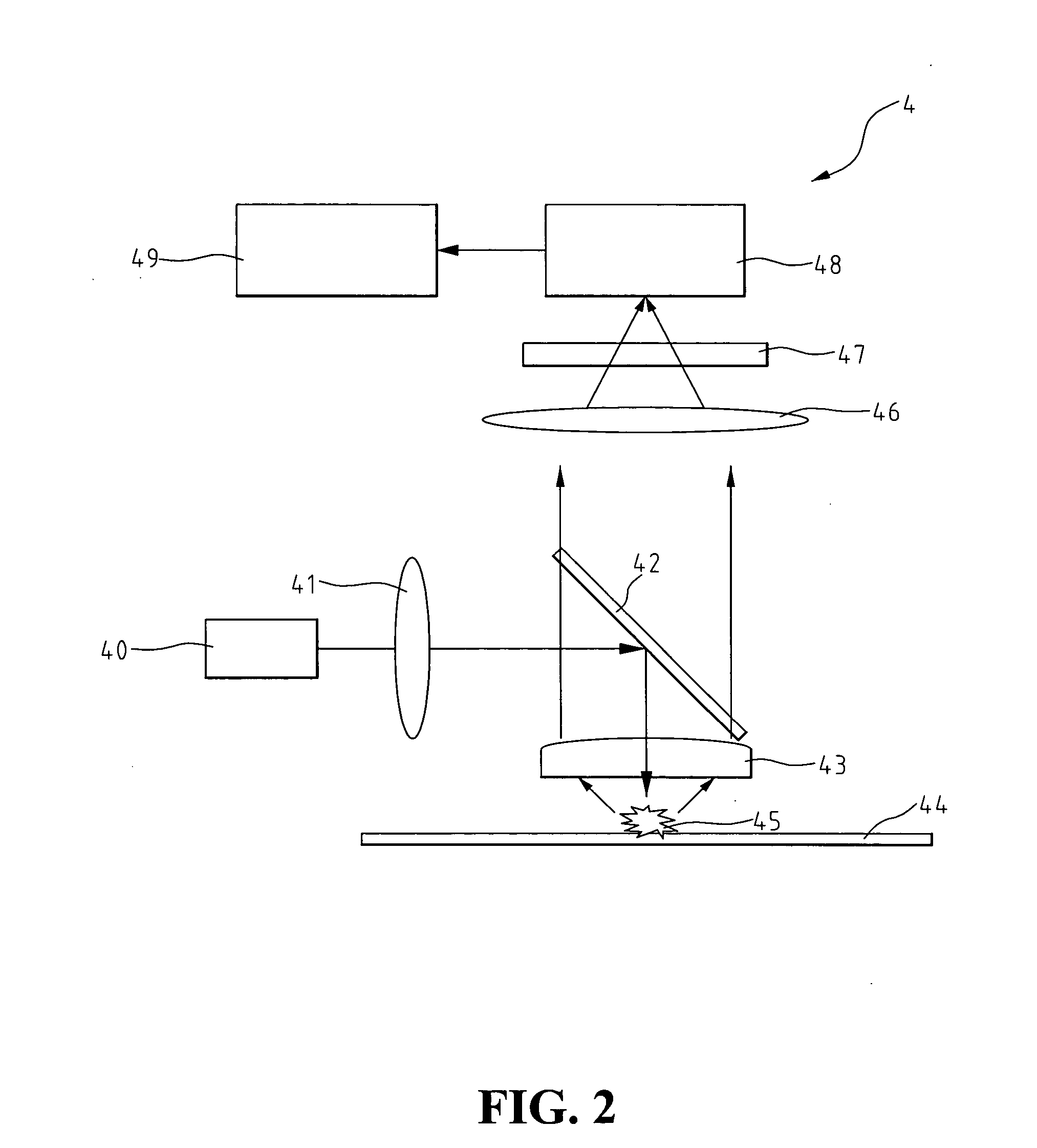CCD-based biochip reader
a biochip reader and ccd technology, applied in the field of ccd-based biochip readers, can solve the problems of large sample size, large time consumption, and inability to complete analysis, and achieve the effect of rapid and efficient detection
- Summary
- Abstract
- Description
- Claims
- Application Information
AI Technical Summary
Benefits of technology
Problems solved by technology
Method used
Image
Examples
Embodiment Construction
[0017] Preferred embodiments of the present invention will now be described in detail below with reference to the accompanying drawings. FIG. 3 is a schematic view showing an embodiment of a CCD-based biochip reader (5) of the present invention. The CCD-based biochip reader (5) comprises a light source (50), such as a laser source, for emitting flat-top energy light beams, which means the energy distribution of the light beams is non-Gaussian (uniform) distribution in intensity; a collimating lens (51) for converting said light beams into wide parallel rays of light (if the laser contains a collimator, it does not need to add this collimator), passing said wide parallel flat-top energy rays of light through a biochip (52) and exciting fluorescence from fluorescent targets on the biochip (52); a focusing lens (53) for focusing the fluorescence (if the CCD camera with a lens head, it does not need a focusing lens); a filter (54) for filtering out said parallel rays of light; a large-a...
PUM
| Property | Measurement | Unit |
|---|---|---|
| fluorescence | aaaaa | aaaaa |
| charge- | aaaaa | aaaaa |
| flat-top energy | aaaaa | aaaaa |
Abstract
Description
Claims
Application Information
 Login to View More
Login to View More - R&D
- Intellectual Property
- Life Sciences
- Materials
- Tech Scout
- Unparalleled Data Quality
- Higher Quality Content
- 60% Fewer Hallucinations
Browse by: Latest US Patents, China's latest patents, Technical Efficacy Thesaurus, Application Domain, Technology Topic, Popular Technical Reports.
© 2025 PatSnap. All rights reserved.Legal|Privacy policy|Modern Slavery Act Transparency Statement|Sitemap|About US| Contact US: help@patsnap.com



